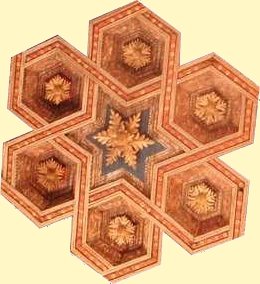|
|
M. Ángeles Hernández-Cifre,
Universidad de Murcia
The Roots of the Steiner Polynomial
LaTeX
pdf
|
 |
Let K be a compact convex set in the Euclidean space. It is well known
that the volume of the outer parallel body K+ρBn can be
expressed as a polynomial of degree the dimension n in the parameter
ρ,
which is known as the Steiner polynomial of the body K. The
coefficients Wi(K) so defined are called the quermassintegrals of
K. In particular, W0=V is the volume, nW1=S is the surface area,
nW2=M is the integral mean curvature and Wn=κn is the volume
of the n-dimensional unit ball. On the other hand, the alternating
Steiner polynomial (i.e., the above polynomial in which the variable
ρ is changed by -ρ) has been considered in some papers by
Teissier, Oda, Sangwine-Yager and others.
We have studied the roots of the Steiner polynomial itself, obtaining a
characterization of the family of the 3-dimensional convex bodies
depending on the type of roots of their Steiner polynomial. In this talk
we intend to present how this characterization provides also interesting
consequences in different geometric problems: for instance, in Blaschke's
problem (to find a characterization of the set of all points in
R3 of the form
(V(K), S(K), M(K)) as K ranges over
the family of all convex bodies in R3), or in Teissier's
conjecture (about the relation between the roots of the alternating
Steiner polynomial and the inradius and circumradius of K).

